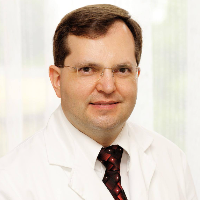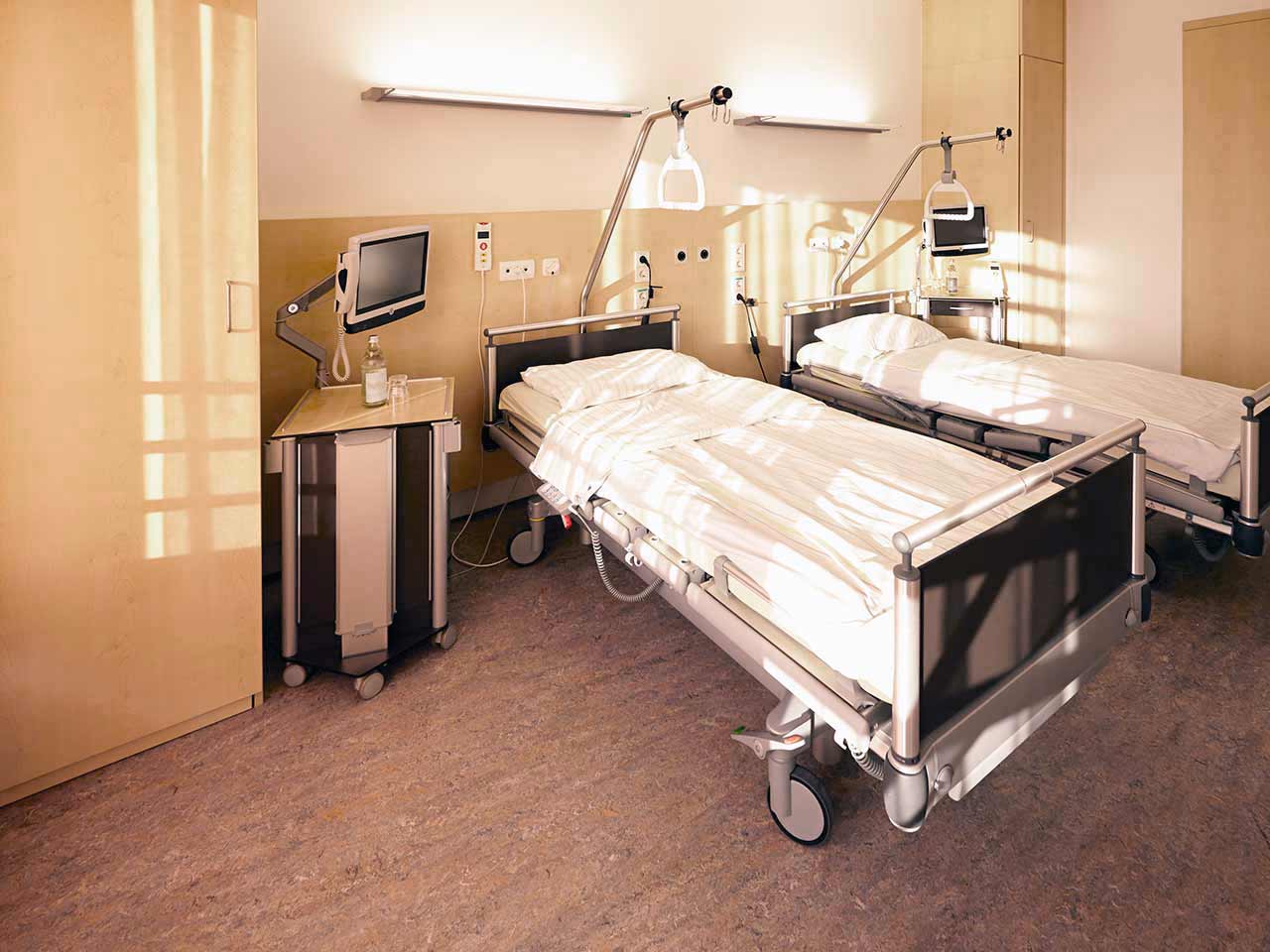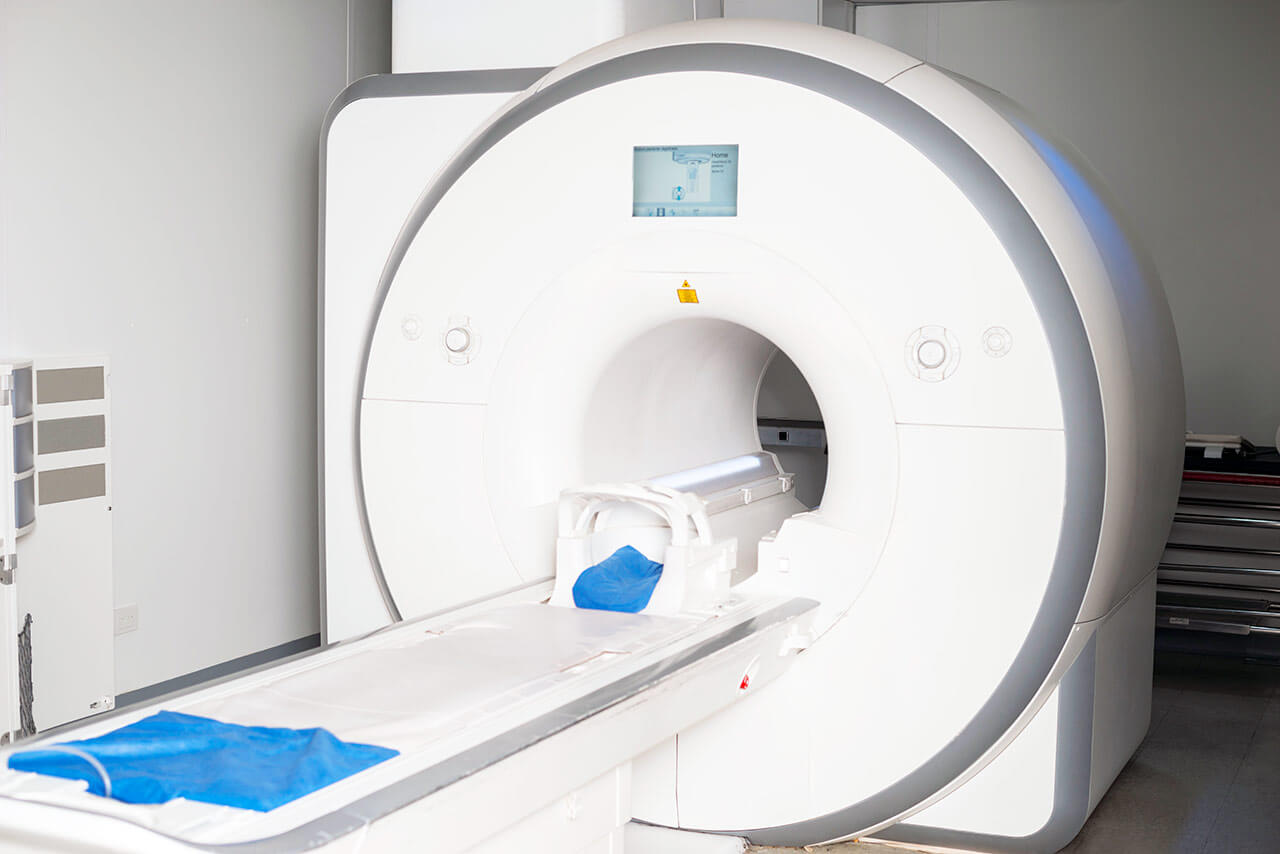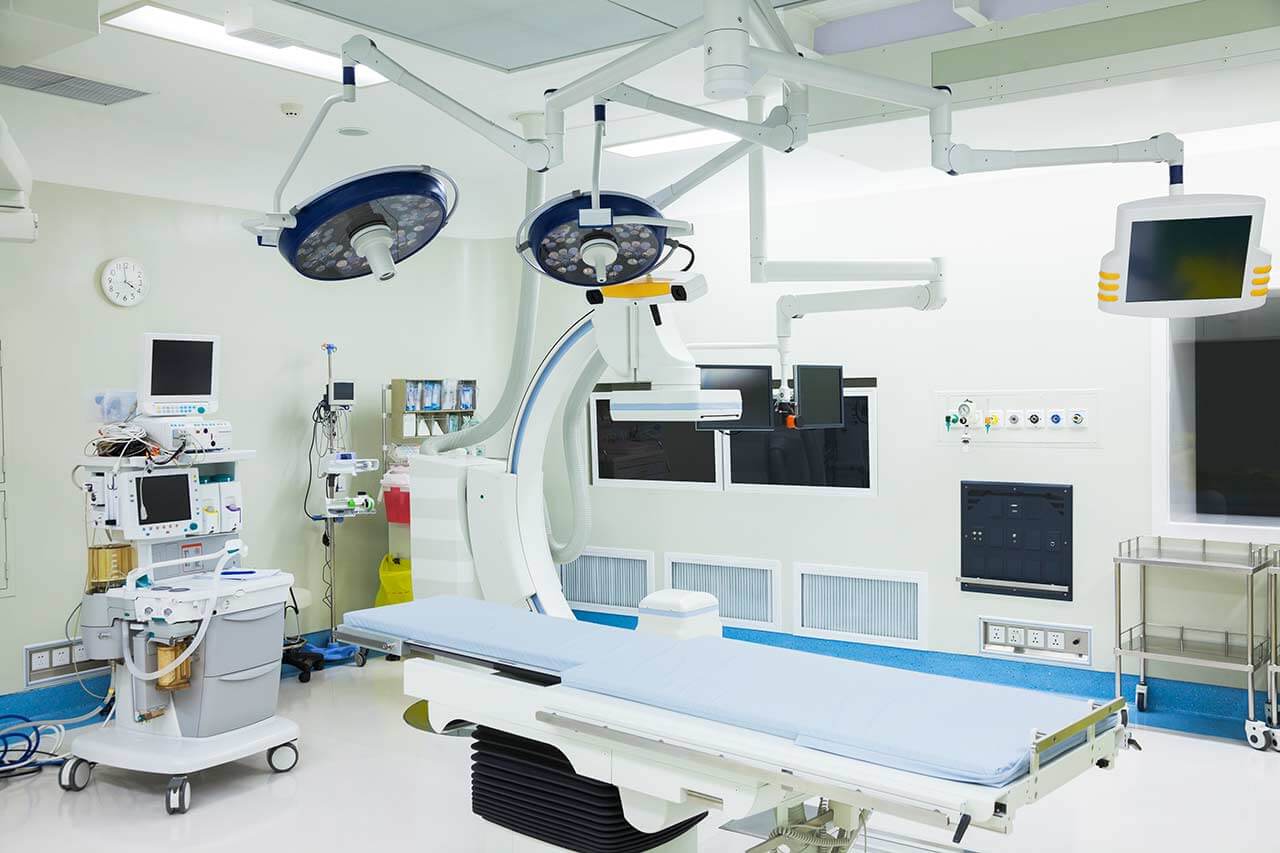
The program includes:
- Initial presentation in the clinic
- clinical history taking
- review of medical records
- physical examination
- ophthalmologic examination:
- slit lamp examination
- pupil examination
- ocular motility examination
- ophthalmoscopy
- perimetry (visual field test)
- computer perimetry
- visometry (without correction and with correction)
- keratometry
- pachymetry
- refractometry (objective, subjective, cycloplegic)
- autorefractometry
- non-contact tonometry
- optical coherence tomography OCT (if indicated clinically)
- nursing services
- services of chief physician and all leading experts
- explanation of individual treatment plan
Required documents
- Medical records
Service
You may also book:
 BookingHealth Price from:
BookingHealth Price from:
About the department
The Department of Adult and Pediatric Ophthalmology at the Nuremberg Hospital offers the full range of medical services for the diagnostics and treatment of diseases of the eye and its appendages in patients of all age groups. The department's team of ophthalmologists focuses on patients with cataracts, glaucoma, age-related macular degeneration, and diseases of the retina, vitreous body, and cornea. Children with strabismus and other ophthalmic diseases can also receive medical care here. The basis for the department's successful work is the use of state-of-the-art equipment, including modern laser systems, devices for fluorescent angiography, Heidelberg retinal tomography, optical coherence tomography, perimetry, ultrasound examinations, etc. All this, combined with the exceptional professionalism of the department's doctors, forms a solid base for achieving the best therapeutic results. The department treats more than 10,000 patients each year, with approximately 7,200 of these patients receiving medical care on an outpatient basis. The patients' health is in the safe hands of a highly professional medical team consisting of 13 ophthalmologists. The Head Physician of the department is Prof. Dr. med. Josef Schmidbauer.
The department has gained vast experience in the treatment of glaucoma. This disease provokes a progressive and irreversible decrease in visual acuity due to impaired intraocular fluid outflow. Without timely treatment, damage to the optic nerve may occur, leading to irreversible vision loss. Should glaucoma be suspected, the patient will have to undergo an examination that includes tonometry (intraocular pressure measurement), perimetry (assessment of the visual fields), and optical coherence tomography. If the diagnosis is confirmed, a conservative or surgical treatment regimen will be developed for the patient. It is worth considering that conservative treatment with eye drops and pills for intraocular pressure normalization is effective in the early stages of glaucoma. The second-line treatment is a laser intervention, namely selective laser trabeculoplasty. This procedure restores the aqueous humor outflow, normalizes the intraocular pressure, and prevents blindness. As a rule, laser treatment is provided on an outpatient basis. Patients with complex cases of glaucoma may require classic surgery. The department's ophthalmologists can successfully perform trabeculectomy, non-penetrating deep sclerectomy, and implantation of drainage devices. The specialists regularly perform both laser and surgical treatment of glaucoma, ensuring excellent surgical outcomes for patients.
The treatment of cataracts, which are characterized by partial or total clouding of the lens, is an equally important clinical focus for the department's doctors. If left untreated, cataracts may lead to complete vision loss. The main method for detecting the clouding of the lens is biomicroscopy, which is a non-contact examination of the anterior segment of the eye with a slit lamp. Should the diagnosis be confirmed, the patient will need surgery because conservative therapy can only slow down the progression of the disease but cannot cure it completely. The department most frequently performs ultrasound phacoemulsification. The essence of this procedure is the following: ophthalmologists use an ultrasound device to destroy the patient's own lens and remove it from the eye using an aspirating instrument, after which they implant an intraocular lens in its place. Ultrasound phacoemulsification with intraocular lens implantation is performed under local anesthesia on an outpatient basis.
The department also treats secondary cataracts, which are characterized by the clouding and thickening of the lens capsule and may lead to recurrent visual loss after the primary surgery. In such cases, the specialists perform a YAG laser capsulotomy. The YAG laser is used to remove the cloudy capsule that is formed after the initial cataract surgery, thus improving the patient's vision. The laser procedure is absolutely safe and is performed on an outpatient basis.
The ophthalmologists at the medical facility also provide patients with effective treatment of age-related macular degeneration, which is the most common cause of irreversible loss of central vision in older people. Without treatment, the patient's visual acuity gradually deteriorates, leading to complete blindness. The main treatment method for age-related macular degeneration is intraocular injections of anti-VEGF drugs (angiogenesis inhibitors). In some cases, several procedures may be required to achieve a good result. The last-line treatment is a surgical procedure to remove the vitreous body (vitrectomy).
In the field of pediatric ophthalmology, special attention is given to the correction of strabismus and the treatment of congenital glaucoma and cataracts in young patients. Surgical procedures are most commonly indicated for children with the above-mentioned diseases.
The department specializes in the diagnostics and treatment of the following eye diseases:
- Cataracts, including secondary forms of the disease
- Glaucoma
- Age-related macular degeneration
- Central retinal vein occlusion
- Diabetic retinopathy
- Benign and malignant eye tumors
- Macular hole
- Dry eye syndrome
- Astigmatism
- Keratoconus
- Retinal detachment
- Strabismus and other visual impairments in children
- Other diseases
The department's range of medical services includes the following:
- Conservative treatment methods
- Drug therapy with eye drops
- Laser therapy
- Surgical treatment methods
- Trabeculectomy, non-penetrating deep sclerectomy, and implantation of drainage devices for treating glaucoma
- Ultrasound phacoemulsification with follow-up intraocular lens implantation for treating cataracts
- Intraocular injections of anti-VEGF drugs for treating age-related macular degeneration
- Vitrectomy for treating age-related macular degeneration
- Strabismus surgery
- Plastic surgery on the eyelids, tear ducts, and conjunctiva
- Other treatment options
Curriculum vitae
Higher Education and Professional Career
- Medical studies at the University of Wuerzburg.
- Professional training, Department of Ophthalmology, University Hospital Heidelberg.
- Permanent Representative of the Head Physician in the Department of Ophthalmology at the Dietrich Bonhoeffer Clinic.
- Senior Research Fellow, Research Center for Ophthalmic Therapy and Biological Devices.
- Max Kade Foundation Scholarship, New York, German Research Foundation Scholarship, Medical University of South Carolina, Charleston, USA.
- Managing Senior Physician, Department of Ophthalmology, University Hospital Saarland Homburg.
- Head Physician at the Offenburg Ophthalmology Clinic.
- Medical Director of the ARIS Eye Clinic Nuremberg.
- Since 01.06.2007 Head Physician of the Department of Adult and Pediatric Ophthalmology at the Nuremberg Hospital.
Memberships in Professional Societies
- American Academy of Ophthalmology (AAO).
- American Society of Cataract and Refractive Surgery (ASCRS).
- European Society of Cataract and Refractive Surgeons (ESCRS).
- International Intraocular Implant Club (IIIC).
- German Society of Ophthalmology (DOG).
- Professional Association of Ophthalmologists (BVA).
- German Retina Society.
Photo of the doctor: (c) Klinikum Nürnberg
About hospital
According to the reputable Focus magazine, the Nuremberg Hospital ranks among the top German medical facilities!
The hospital is one of the largest, highly specialized medical centers in Europe and positions itself as the maximum care hospital. The healthcare facility is an academic hospital of the Paracelsus Medical University in Nuremberg. It houses 42 departments, institutes, and highly specialized centers focusing on various medical fields. All the hospital's employees work hand in hand for the benefit of their patients. The specialists strive to provide top-class medical care for every patient. Moreover, the medical team always shows a humane attitude and understanding towards the patient's life situation, making every effort to support them during the entire therapeutic process.
The total number of beds in the hospital is 2,233. The medical team consists of more than 8,400 employees, including many world-famous doctors and professors who had their clinical training at the best medical facilities in Germany, other European countries, and the USA. The hospital admits more than 100,000 inpatients and more than 170,000 outpatients annually. The number of patients who come to the hospital steadily increases every year, which is the best confirmation of its high standards and outstanding treatment results.
The cornerstone of successful clinical practice is state-of-the-art technical infrastructure. The hospital offers its patients innovative technologies such as the Da Vinci surgical system, devices for stereotactic procedures, intraoperative radiation therapy, angiography, PET CT devices, high-intensity focused ultrasound, 64-slice CT scanners, and other advanced medical devices. The combination of cutting-edge technical facilities and the high competence of the physicians allows for the provision of effective treatment even in the most complex cases.
The Nuremberg Hospital is undoubtedly one of Germany's leading medical facilities, where patients benefit from modern infrastructure, precise diagnostics, effective treatment, and responsive care.
Photo: (с) depositphotos
Accommodation in hospital
Patients rooms
The patients at the Nuremberg Hospital live in comfortable single and double rooms. Each patient room is equipped with an ensuite bathroom with a shower and a toilet. Standard rooms include an automatically adjustable bed, a bedside table, a wardrobe for storing clothes, a table and chairs for receiving visitors, a TV, and a radio. The hospital also offers Wi-Fi.
If desired, patients can live in enhanced-comfort rooms. Such patient rooms are more spacious, and their furnishings correspond to the level of an upscale hotel.
Meals and Menus
The patients at the hospital are offered tasty and balanced meals three times a day: breakfast, lunch, and dinner. The patients have a daily choice of three dishes for lunch and dinner, while breakfast is served as a buffet.
If, for some reason, you do not eat all foods, you will be offered an individual menu. Please inform the medical staff about your food preferences prior to treatment.
Further details
Standard rooms include:
Accompanying person
Your accompanying person may stay with you in your patient room or at the hotel of your choice during the inpatient program.
Hotel
You may stay at the hotel of your choice during the outpatient program. Our managers will support you for selecting the best option.





